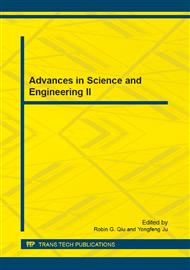p.289
p.294
p.300
p.305
p.309
p.316
p.321
p.326
p.331
Application of Fuzzy Neural Network in Ship Course Control
Abstract:
As the uncertainty of parameters and the random nature of disturbances that effect a ship’s course,one of the methods which can be used for designing a nonlinear ship course controller is the neural intelligent method. It is used here for designing a configuration of a nonlinear controller, which are then applied to ship course control. In the paper, we used fuzzy logic and neural network based on T-S model to design the controller. During the control design process, the structure of ship automatic steering and fuzzy neural network feedback controller were built. In order to enhance adaptive characteristics of the controller,the parameters of the network were optimized by a GA algorithm. The proposed course keeping method was tested in a simulation study involving a non-linear model of a ship. Simulation results show that the performance of the ship controller is valuable and easy to implement.
Info:
Periodical:
Pages:
309-315
Citation:
Online since:
October 2011
Authors:
Keywords:
Price:
Сopyright:
© 2012 Trans Tech Publications Ltd. All Rights Reserved
Share:
Citation:


